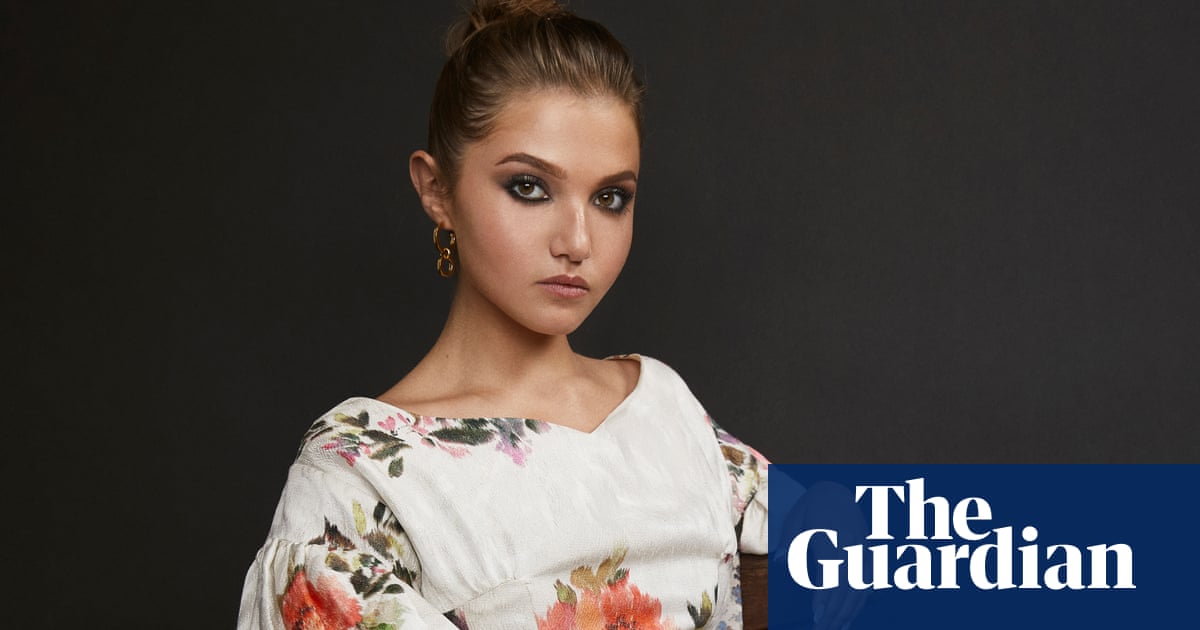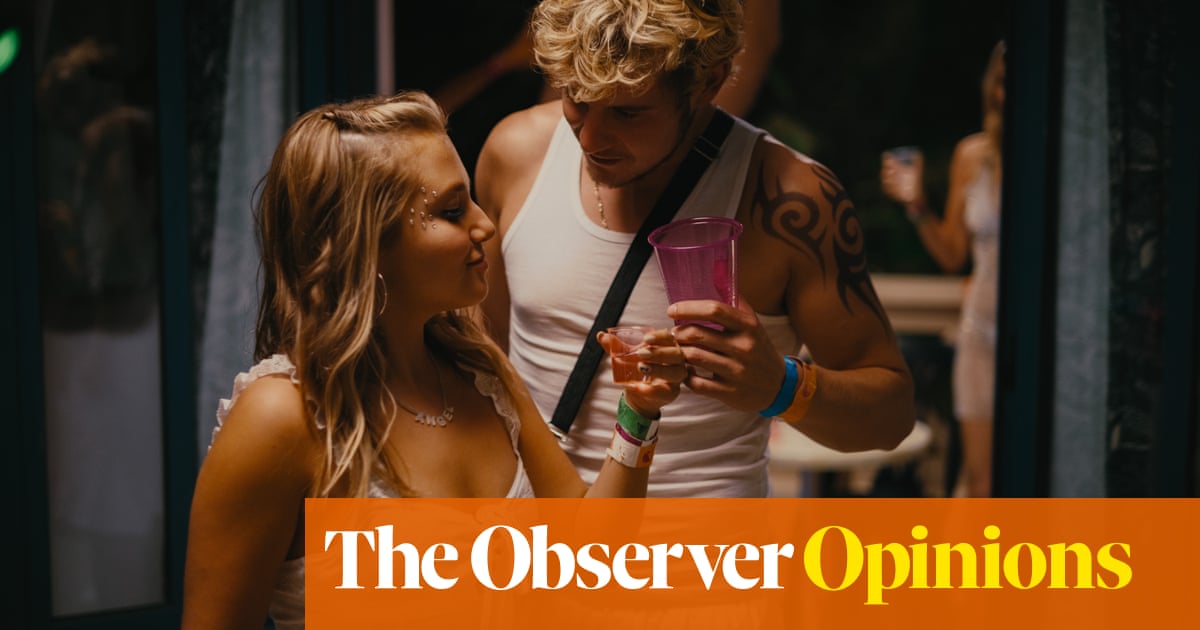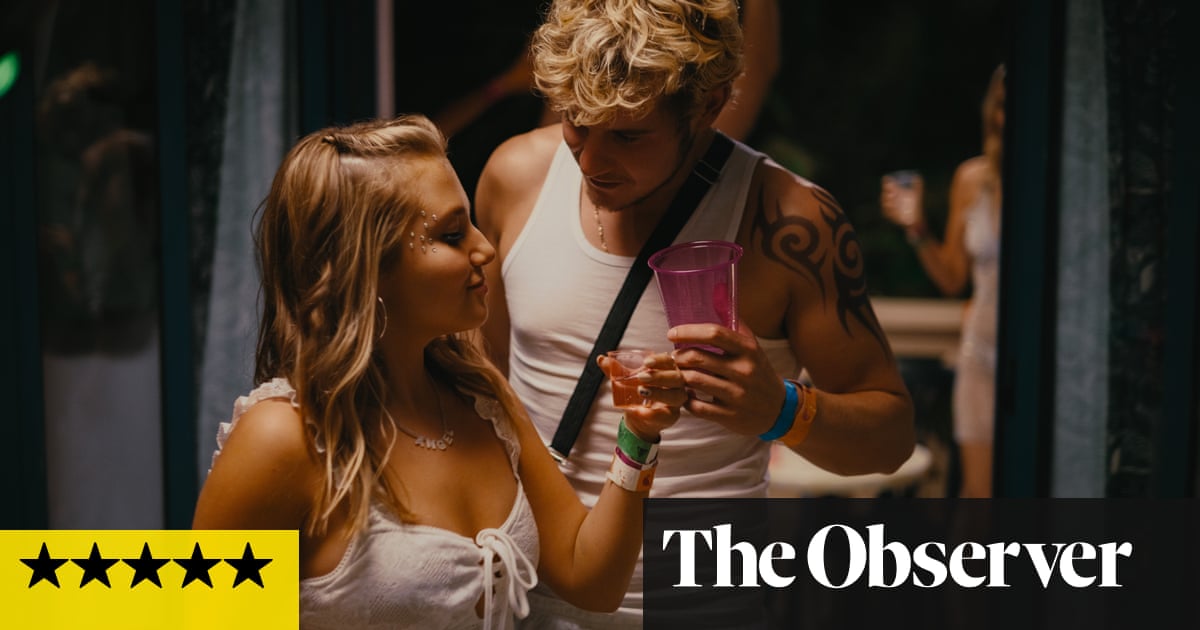
Mia McKenna-Bruce had watched How to Have Sex just once before it screened at this year’s Cannes film festival. The first viewing had been in London: an intimate, cast-and-crew-only affair. Between marvelling at the visuals, score, edit, and cheering on the rest of the performances, she had little time to take in what was actually unfolding on screen.
“And maybe,” McKenna-Bruce now says, “I was also too in shock to really digest anything. It was only at Cannes in May that I really sat back and took in what happened to Tara, my character. I sobbed my heart out. You really see her journey, the nuances of the experiences she has, in a way I had no idea was possible. It was overwhelming.” That Cannes crowd gave How to Have Sex an eight-minute standing ovation, and it went on to win the Un Certain Regard award, which often recognises less-established film-makers. It is well deserved. The film is an impressive debut from writer-director Molly Manning Walker, and the nuance of McKenna-Bruce’s performance is remarkable.
In the film, McKenna-Bruce – who is 26 – plays one of three 16-year-old girls who head on a post-GCSE trip to Malia, Crete’s hedonistic party capital. What starts as a high-octane adolescent coming-of-age adventure takes a first subtle, then troubling, turn as McKenna-Bruce’s Tara is pressed by her friends to lose her virginity. “The emotions at the start are very different to the end,” is how McKenna-Bruce puts it, “but the change is gradual. It’s deliberately hard to know exactly what’s going on at times: sexual assault can be disorientating.”
We are meeting at lunchtime in a quiet pub in Kent in early October. Barely five months have passed since Cannes, but for McKenna-Bruce it feels a lifetime. Mostly because, five weeks ago, she gave birth to her first child. In a neat black turtleneck, with sunglasses resting on her forehead, she seems remarkably together. “This? It’s all a facade,” she says, gesturing up and down, before bursting into laughter. “The first couple of weeks were just mad. Now I think I’m starting to get some humanity back; I’ve stopped weeping all the time.”
For McKenna-Bruce, whose previous credits include supporting parts in The Witcher, Vampire Academy and Netflix’s adaptation of Jane Austen’s Persuasion (she played Mary Musgrove, younger sister of Dakota Johnson’s Anne Elliot), this role could be a breakthrough. She has certainly put in the work. Growing up in New Eltham, south-east London, she went to dance school from the age of two. Convinced that she needed to become American to make it big, McKenna-Bruce spoke with a US accent through most of primary school: at home, in class, everywhere.
“Literally,” she says, laughing. “Why did nobody stop me? It’s because I was obsessed with Shirley Temple.”
Her first acting gig was in the West End, aged eight, playing a ballet student in Billy Elliot the Musical. Then came EastEnders. “I was Jack Branning’s daughter,” she says, “who was run over by a car, which severed her spinal cord. Then I did a film called The Fourth Kind. I was nine, playing a blind girl who lost her sight after witnessing her dad shoot himself.” (That girl had an American accent, she points out, “so the practice paid off, eventually”.) She was just finishing primary school when the audition for the BBC’s Tracy Beaker came through. All in, she spent seven years on the franchise’s various spin-offs.
“It was a children’s show, but again there were serious themes,” she says. “My character’s storyline included having a mum in an abusive relationship; obviously the backdrop was young people in the care system.”
As material goes, I say, it all sounds rather heavy for a child. “I think that’s just what I’ve always been drawn to,” she replies. “I want to tell complex stories. It was only in filming How to Have Sex, however, that I actually realised the pattern.”
Now, with her big break on the horizon, things feel slightly bittersweet, she suggests. “With baby, it’s the first time that acting doesn’t feel like the be-all and end-all in my whole life. It’s no longer the priority. It’s also nice to get out of the house, to be honest.” Promoting the film with a newborn is a logistics-heavy operation. “Today, baby is with my sister just round that corner,” she says, pointing to another dining room in the pub. “We’ve got a bunch more festivals coming up, before the general release. I want to throw myself fully into everything – just with lots of nappies.”
It was December 2020 when an early draft of How to Have Sex’s script landed in McKenna-Bruce’s inbox. Reading through it, she found herself transported back a decade. “I remember going on these holidays,” she says. “They were a rite of passage. Mine was to Ibiza. The script was clearly written by someone young who gets it.” It captured “not just sex and consent, but also the heightened stakes of everything at that age; the complexities of growing up, girlhood and friendship.
“You don’t instantly know how to deal with those situations,” she continues. “Or how to talk about it. We’re with Tara as she starts to question whether she liked what happened. And if not, how to voice that.” There’s an unravelling. “It’s her first time. She’s questioning if that’s how it’s supposed to be. If she did something wrong. Is it on her? She’s got nothing to compare it with. And often, your first time, because it’s such a minefield, doesn’t feel that great. But without experience or people to turn to, it’s so hard to know. I hope this film can be a reference point.”
The film was shot on location in Malia over two months from September 2021. “There were still people out there on their holidays at the start,” she says. “By the time we left a couple of months later, it was a ghost town.”
The party scenes were shot in the first few weeks, and the nightclub sequences are captured expertly: the adrenaline, confusion and euphoria; the hot, heavy, thumping beats. “We were really in those clubs, dancing to music. There were sometimes a few hundred people there: a sea of human beings.” The actors may not have been drinking during night shoots, “but we were really hyper, and we’d spin around in circles lots of times before scenes to make things feel a bit wonky. It was intense to be making this film while people were out there partying, including girls the age of the characters.” Still, cast and crew squeezed in some partying in their spare time. Call it going method.
“It meant I really did feel the stillness that came when we turned to the aftermath of what happened to Tara,” McKenna-Bruce says. “From all the excitement to feeling alone. I was living the crash.” Key in portraying the turn, McKenna-Bruce believes, was emphasising how it felt devastating and muted to Tara at the same time. “It doesn’t normalise the experience Tara has,” she says of the film, “but also, it’s not overly dramatised. It’s portrayed as it would really happen, and too often does. In fact, filming the post-assault scenes really affected the guys much more than it did the girls. For us, it didn’t feel such a shock; we know these stories. But seeing it play out in real time for the boys, as they realised what was happening … It was fascinating.”
Given her weighty early acting gigs, McKenna-Bruce understands the responsibility that roles such as Tara come with. In fact, that was part of the appeal. She is keen to continue conversations about the film’s questions off screen: “I can’t say I want to start conversations, and then not talk when I have the chance.” Ahead of the theatrical release, she has been to a few screenings. “I was expecting it to be a film that mostly spoke to teenagers, but there have already been so many people – teenagers, others my age, and generations above – who’ve opened up about having similar experiences to the ones in the film. Lots of them, especially older women, saying they’d never really dealt with the emotions or even realised it had affected them.”
One interaction stands out. “There was an older man outside one of the screenings who was freaking out. He said he saw his younger self in one of the male characters.” Creating a space for viewers to reflect is precisely what the team wanted to do: “It’s why you don’t see any character as a monster; there’s no painting someone as victim or villain. We just tell the story.”
Next week, McKenna-Bruce’s 16-year-old sister will see the film for the first time. “I’m intrigued to see what she makes of it, because I know what I want her to take away: don’t listen to outside pressures, your mates, social media. Whatever. You don’t have to do things you’re not ready to do.”












